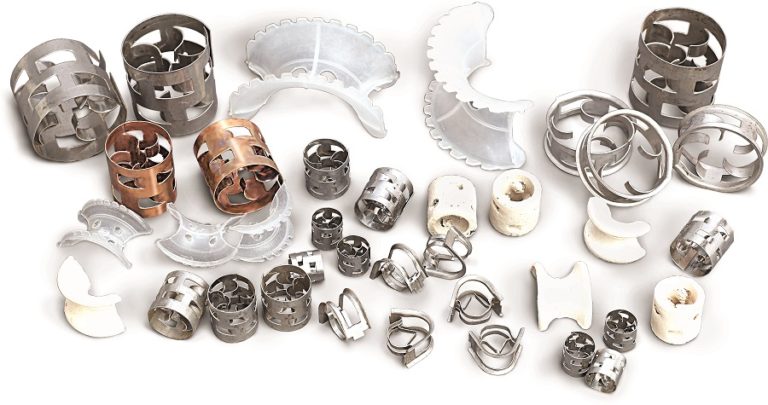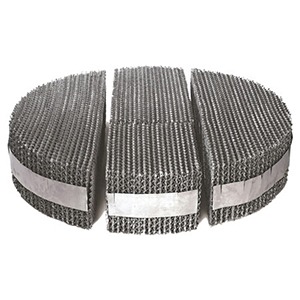Packing is integral to various processes, including scrubbing, absorption, stripping, and distillation. The packing helps optimize the separation process. It provides a large, wet surface that allows the separation of chemicals.
Packing enhances the effect of various forces like heat and pressure to augment the efficiency of the chemical separation process. Now, there are two types of packings – random and structured. Let’s look at these packing types and highlight the differences in this blog.
What is a Random Packing?
Random packing is a packing stack that packs material randomly. The packing material is a particle body with a particular geometric shape and size, usually stacked in a random packing column. Some common types of random packings include intalox saddle, wire gauze packing, and Pall ring.

Random Packing
This type of packing is usually used in the distillation column to increase the vapor contact and enhance the efficiency of the chemical separation.
What is a Structured Packing?
Structured packing is packing arranged geometrically and uniformly. It involves packing the stacked material in an organized way. It comprises various packing units that have the same geometry.

Structured Packings
There are various types of structured packing, including structured metal packing, ceramic structured packing, and plastic structured packing. One of the common applications of structured packing includes packed tower distillation.
What is the Difference Between Random Packing and Structured Packing?
Let’s look at what differentiates random and structured packing from each other. It includes efficiency, advantages, operational flexibility, etc.
| Random Packing | Structured Packing |
| Comparatively lower processing efficiency | Comparatively higher processing efficiency |
| Comparatively expensive | Comparatively cheaper for the same theoretical number plate and handling capacity |
| More anti-blocking in nature | Less anti-blocking |
| Lower operational flexibility | Higher operational flexibility |
| Lower processing capacity | Higher processing capacity |
In addition to the above, random packing offers a larger specific surface area, uniform liquid distribution, higher mass, and high heat transfer efficiency. Besides, it has a smaller pressure drop. But structured packing, on the other hand, provides an improved contact area, better cost-effectiveness, and higher mass transfer. Random packing is easier to maintain than structured packing.
Applications of Random Packing and Structured Packing
Random Packing Applications
Some applications of random packing applications include the following.
- Atmospheric and high-pressure distillation
- Deethanizers
- Demethanizers
- Acid gas removal
- Sour water stripping
- Main fractionators
- Quench towers
- Structured Packing Applications
Structured packing also is used across various applications that include the following.
- Vacuum and atmospheric crude oil fractionators
- FCC main fractionators
- TEG contactors
- Air separation
- Xylene splitters
- Ethylene oxide absorbers
- Acrylonitrile absorbers
- H2S absorbers
- Cyclohexanone/Cyclohexanol separation
- CO2 absorbers
Partner with S-Cube for Random Packings and Structured Packings
Are you looking for random packing or structured packing manufacturer in India? Partner with S-Cube. We are one of the leading manufacturers of random packing and structured packings in India, with years of experience and the latest manufacturing infrastructure.
We serve various industrial applications through our top-quality packings manufactured in various sizes and capacities to serve varying separation needs. Explore our structured packings here while looking at our random packing range here. Call us at +91-2041308625 or email us at sales@s3dist.in.
Any Queries: chetan@s3dist.in || project@s3dist.in
Copyright © 2024 All Rights Reserved. Powered by S-Cube®


